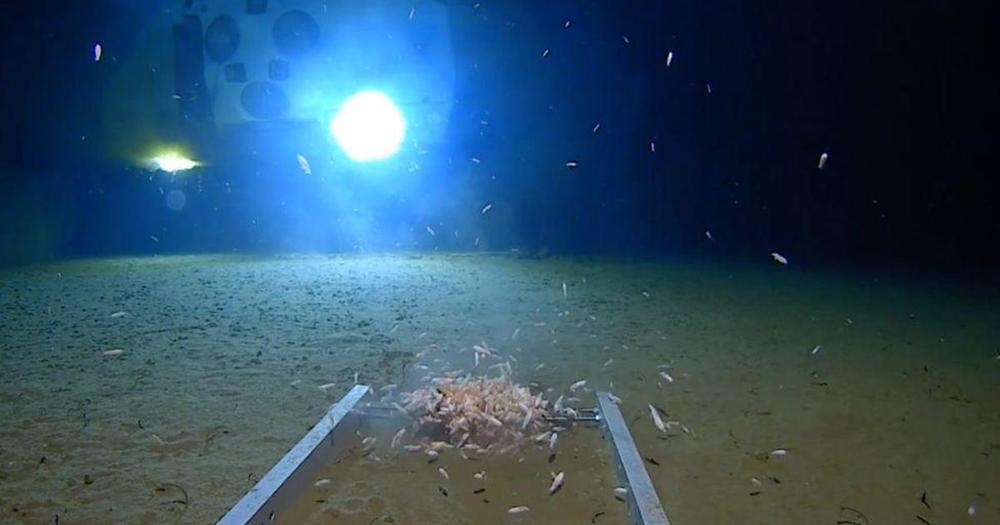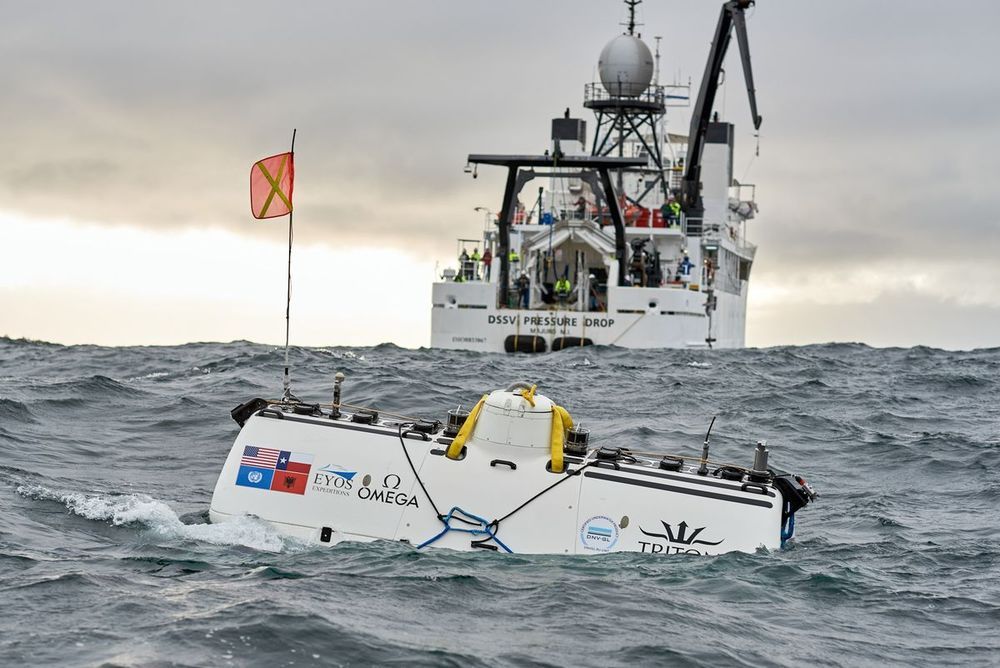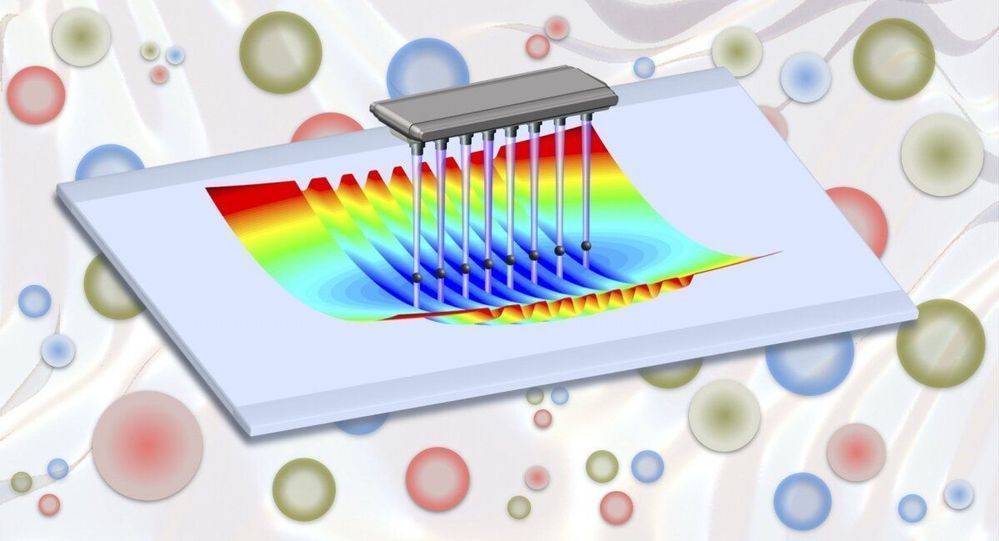Senior Technical Analyst Jim Wyckoff prepares investors with an overview of how the markets opened and closed. What moved metal prices? How do the technicals look? By looking at important developments.
The diver’s team found four new species and something else no other expedition has seen — pollution.
While billionaires vie for the stars, $750,000 trips to the bottom of the Marianas Trench will begin departing in May.
Circa 2019
The world record for the deepest dive in history has just been broken by Dallas businessman and explorer Victor Vescovo, who plunged down 35,853ft into the Mariana Trench’s Challenger Deep—the deepest known point on Earth.
The depth achieved by Vescovo was 66 feet deeper than the previous record for a solo dive, held by film director James Cameron, who reached 35,787ft in 2012. The previous record for the world’s deepest dive (not solo) was 35,813ft, performed in 1960.
Deep Planet, a Discovery Channel documentary series that’s been following Vescovo’s attempt, will allow viewers to travel with the underwater explorer down to this mysterious, unexplored region.
Victor Vescovo wanted to be the first person to reach the deepest points of all five oceans – but first he had to build a submarine that was up to it.
Stelarc has suspended himself from hooks and had an ear surgically constructed on his arm. Now his Adelaide biennial work puts the audience at the helm.
In nuclear physics, like much of science, detailed theories alone aren’t always enough to unlock solid predictions. There are often too many pieces, interacting in complex ways, for researchers to follow the logic of a theory through to its end. It’s one reason there are still so many mysteries in nature, including how the universe’s basic building blocks coalesce and form stars and galaxies. The same is true in high-energy experiments, in which particles like protons smash together at incredible speeds to create extreme conditions similar to those just after the Big Bang.
Fortunately, scientists can often wield simulations to cut through the intricacies. A simulation represents the important aspects of one system—such as a plane, a town’s traffic flow or an atom—as part of another, more accessible system (like a computer program or a scale model). Researchers have used their creativity to make simulations cheaper, quicker or easier to work with than the formidable subjects they investigate—like proton collisions or black holes.
Simulations go beyond a matter of convenience; they are essential for tackling cases that are both too difficult to directly observe in experiments and too complex for scientists to tease out every logical conclusion from basic principles. Diverse research breakthroughs—from modeling the complex interactions of the molecules behind life to predicting the experimental signatures that ultimately allowed the identification of the Higgs boson—have resulted from the ingenious use of simulations.
Google Chrome has dominated the internet browser market for the last decade with a staggering near-60% market share and users stretching into the billions.
Rivals to Google Chrome, including Apple’s Safari, Microsoft’s Edge (formerly known as Internet Explorer), and Mozilla’s Firefox have largely failed to convince users to switch—but browser choices are becoming more complex.
Users’ desire for greater security, better privacy, and an ill-defined need to “take back control” from the likes of Google and Microsoft has opened the door for alternatives—including blockchain-based privacy browser Brave, whose chief executive thinks Google “is going to be taken apart over coming years.”
If you’ve been interested in nanotech, but have been too afraid to ask, here is an introductory and interesting article that I’d like to recommend.
My interest in nanotech is based on my hope that nanotech can lead to methods of constructing substrates that are suitable for mind uploading. It may lead to a technique to create duplicate minds.
“These ‘biological engineering’ technologies have made real one of the dreams of the nanotechnology pioneers: the deployment of molecular assemblers able to construct any shape with atomic precision, following a rational design.”
“…hybrid bioinorganic devices that mimic biological processes will soon be used in new computers and electronic devices.”
In the mid-1980s, evidence started to emerge from labs across the world confirming that scientists were finally able to reach the nano level in experimental conditions and not just with their theories. Working at scales defined in millionths of a millimetre, Richard Smalley, Robert Curl and Harold Kroto reported the discovery of ‘buckminsterfullerene’ – a nanosized polyhedron, with 32 faces fused into a cage-like, soccer-ball structure, and with carbon atoms sitting in each of its 60 vertices.
These miniature ‘Bucky’ balls (named for their similarity to the geodesic dome structures made by the architect R Buckminster Fuller in the 1950s), are found in tiny quantities in soot, in interstellar space and in the atmospheres of carbon-rich red giant stars, but Kroto was able to recreate them in chemical reactions in the lab while visiting Rice University in Texas. Then, in 1991, Nadrian Seeman’s lab at New York University used 10 artificial strands of DNA to create the first human-made nanostructure, connecting up the DNA strands to resemble the edges of a cube, so marking the beginning of the field now known as ‘DNA nanotechnology’. Clever scientists with broad visions started to realise that a new kind of technology, prophesied by Richard Feynman in the 1950s, was finally materialising, as researchers achieved the capacity to visualise, fabricate and manipulate matter at the nanometre scale.
Ongoing clinical trial to test the effectiveness of vitamin C infusion to help fight against Covid-19:
2019 new coronavirus (2019-nCoV) infected pneumonia, namely severe acute respiratory infection (SARI) has caused global concern and emergency. There is a lack of effective targeted antiviral drugs, and symptomatic supportive treatment is still the current main treatment for SARI.
Vitamin C is significant to human body and plays a role in reducing inflammatory response and preventing common cold. In addtion, a few studies have shown that vitamin C deficiency is related to the increased risk and severity of influenza infections.
We hypothize that Vitamin C infusion can help improve the prognosis of patients with SARI. Therefore, it is necessary to study the clinical efficacy and safety of vitamin C for the clinical management of SARI through randomized controlled trials during the current epidemic of SARI.









